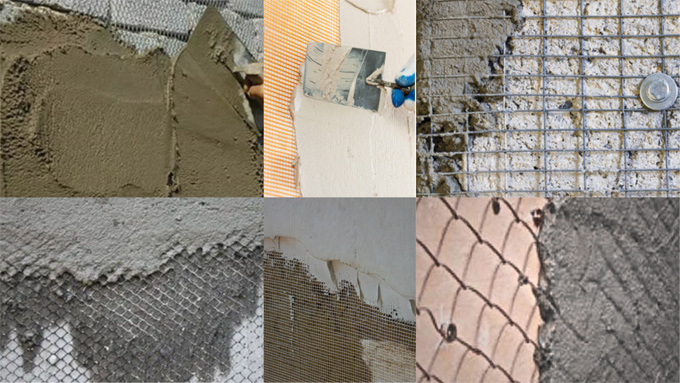
What is the Purpose of using Chicken Mesh in Plastering?

Chicken mesh is a versatile material used in construction projects which is also known as wire mesh or stucco netting. The chicken mesh consists of woven wire mesh which is made from galvanized steel. The chicken mesh helps to increase the strength and longevity of the walls by providing excellent reinforcement and stability to the surfaces of the plasters. The chicken mesh has been formed by twisting two adjacent wires which helps to form a strong honeycomb mesh structure.

The hexagonal shape of the chicken mesh helps to prevent the formation of internal stresses. The chicken mesh is suitable for curved, angled or mounting surfaces because of its flexibility. The chicken mesh also helps to improve corrosion resistance. Special physical and mechanical properties of the chicken mesh are suitable for reinforcement waterproofing, reinforcement plastering, leveling floors and also for face works.
Discussing the effective uses of Chicken Mesh in Plastering
➢ The chicken mesh helps to distribute the plaster uniformly as well as helps to offer a flexible base which helps to absorb minute movement in the underlying surface.
➢ The chicken mesh has served as the gripping surface for the plaster to stick to on smooth or challenging surfaces including concrete, drywall or bricks.
➢ The chicken mesh also helps to strengthen the plaster thus the wall becomes more durable and resistant towards damage and impact.
➢ The chicken mesh also helps to provide a consistent surface for plastering which helps to bridge the gaps or joins among various materials such as concrete and wood.
➢ Chicken mesh helps to provide a textured surface which enables the plaster to adhere more effectively thus ensuring the long-lasting and durable finish.
➢ The chicken mesh can be moulded easily to fit into irregular or curved shapes. This flexible nature of the chicken mesh is appropriate for various architectural designs. Due to the versatility of the chicken mesh, it can be used for both exterior and interior walls.
➢ The chicken mesh is also affordable to reinforce the walls as compared to the other alternatives. The chicken mesh also reduces the requirement for frequent maintenance and repairs.
Different applications of Chicken Mesh for Plasters
Chicken mesh has been used in various plastering applications, which are as follows:
Wall Plastering
Chicken mesh has been applied to the walls before plastering. This helps to provide additional support to the wall and helps to prevent cracks in the wall. In addition, chicken mesh helps to distribute the stress caused by the changes in temperature and structural movement thus helping to ensure a long-lasting plaster finish of the wall.
Repair Work
For repairing the damaged surface of the plaster, chicken mesh is useful. The chicken mesh can be applied in the damaged area which helps to reinforce the plaster as well as helps to create a smooth plaster finish.
Ceiling Plastering
For plastering ceilings, chicken mesh can also be used. The chicken mesh helps to distribute the weight of the plasters as well as helps to provide reinforcement against the ceiling movement.
Different types of Chicken Mesh for Plaster
There are different types of chicken mesh for plasters which are as follows:
Wired mesh
Wired mesh can also classified into three different types which are:
Light-expanded metal mesh
The light-expanded metal mesh has been prepared out of sheet metal which helps to make a diamond-shaped design on the sheet of the metal. These types of wired mesh have been employed to reinforce the plaster for the interior decoration.
Welded wire mesh
These types of wired mesh have been prepared of thin low-carbon-drawn wire or galvanized wire which diameter has varies between 0.4 mm to 1.5 mm. These types of chicken mesh are suitable for plastering both rough and uneven surfaces. In addition, the welded wire mesh enables to bypass of the crack formation in plaster.
Linked chain mesh
This is also known as the mini or micro chain wire fences which have been employed to prevent crack appearances on the wall because of the temperature modifications. This is also a lightweight material whose thickness ranges between 0.5 mm to 2 mm. These types of wired mesh can be applied in the architectural interior wall plaster as well as in outdoor wall insulation plaster. In the case of the structure being prone to high vibration because of the presence of different types of machines, this type of wired mesh can be employed.
Fiberglass mesh
These types of chicken mesh have some unique features including it helps to maintain high strength and it does not burn. These types of chicken mesh are cheap and also made with lightweight materials.
The fibreglass mesh has a wide variety of applications such as, it is used in the construction of plaster facades, interior walls and ceiling surfaces. As fibreglass mesh is unsusceptible to alkalis, it does not rust over time.
Plastic mesh
The plastic mesh is suitable for both interior and exterior surfaces. These types of chicken mesh also help to deliver opposition against the appearance of the crack in the wall surface. The mechanical strength of the structure or the walls has been also improved by using the plastic mesh.
These types of chicken mesh do not restrict their usefulness towards plastering. These types of mesh have been employed for paintwork and plasterwork through pouring floors, help to make heat and sound-insulated walls, help to protect the facades and act as the reinforcement for the window and door frame.
To learn more, watch the following video tutorial.
Video Source: Engineering Motive
Plastic mesh has been also employed for an extended span of walls. The opening of the plaster mesh is available in rectangular or square form.


